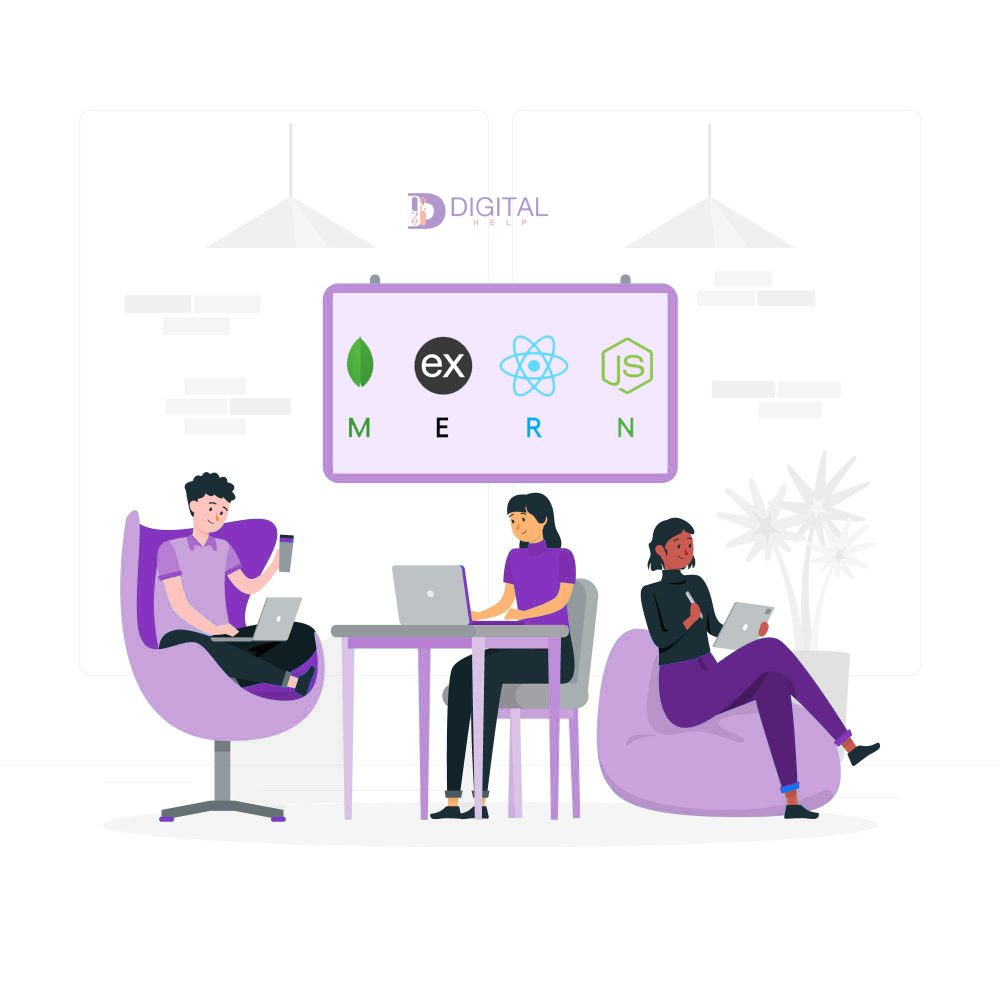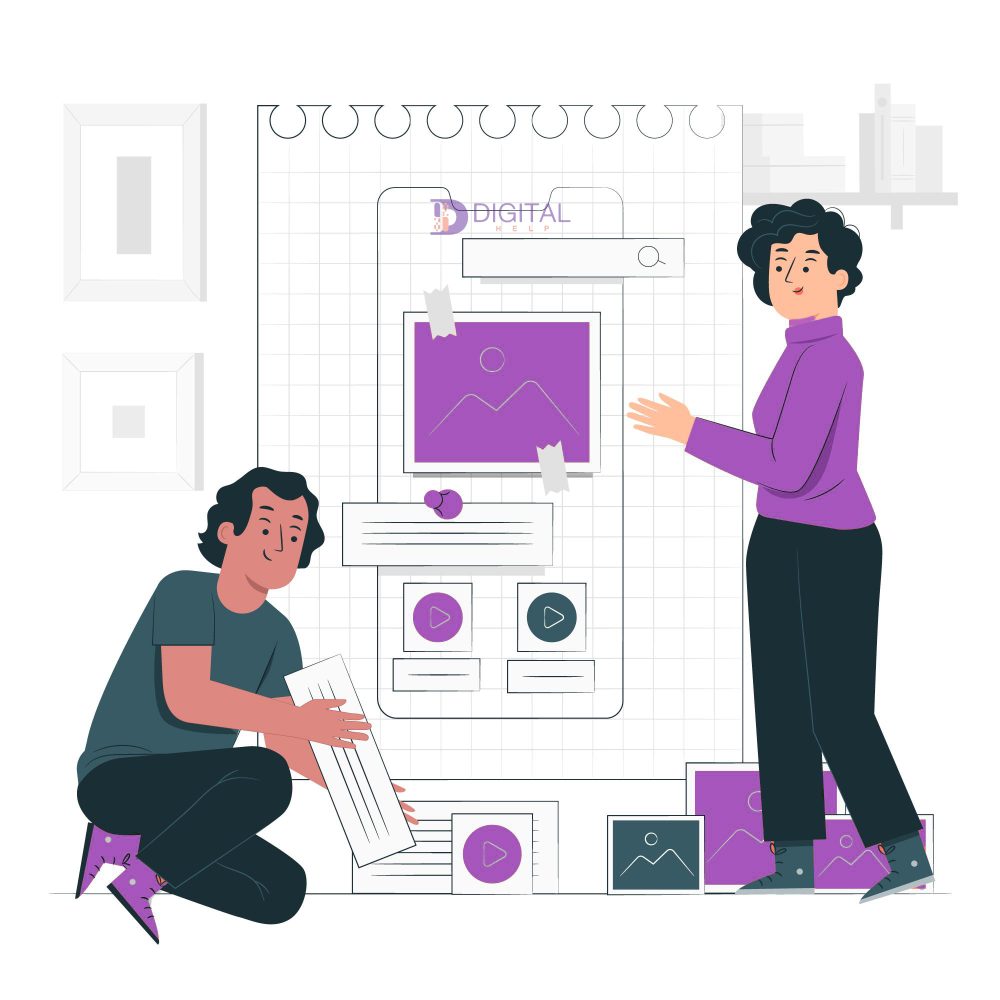A Comprehensive Guide for Modern
Web Applications
The MERN stack is a powerful combination of technologies used for building dynamic web applications. It includes MongoDB, Express.js, React, and Node.js, making it one of the most popular choices for developers today. Each of these technologies plays a crucial role in the development process, enabling developers to use JavaScript throughout the entire stack.
This end-to-end JavaScript solution helps create highly efficient and scalable applications, making the MERN stack a favorite among developers looking to streamline their workflow.


Key Components of the MERN Stack
The key components of the MERN stack include MongoDB, Express.js, React, and Node.js. Each component serves a specific purpose in the stack:
A NoSQL database that stores data in JSON-like documents, making it easy to integrate with JavaScript-based applications. It’s known for its scalability and flexibility, allowing developers to work with large amounts of data efficiently.
A lightweight backend framework that simplifies the development of web applications. It provides robust tools for handling HTTP requests, managing routes, and building APIs. Express is designed to work seamlessly with Node.js, enhancing its capabilities.
A front-end library developed by Facebook for building user interfaces. React is known for its component-based architecture, which allows developers to create reusable UI elements, speeding up the development process and improving the overall user experience.
How the MERN Stack Works
The MERN stack web development process involves integrating MongoDB, Express, React, and Node.js to create a complete web application. The process typically begins with the React front end, where developers build dynamic and interactive user interfaces. React components communicate with the backend through APIs created with Express.js.
These APIs handle requests from the front end and interact with the MongoDB database, where data is stored and retrieved. Node.js acts as the server environment, managing the overall operation of the application. Together, these components work seamlessly to provide a smooth and efficient development process.

Challenges and Considerations in MERN Stack Development
While MERN full stack development offers many benefits, it also comes with challenges. One of the main challenges is the learning curve associated with mastering each component of the stack.
Developers need to be proficient in JavaScript and understand how MongoDB, Express.js, React, and Node.js work together.
Additionally, performance issues can arise if the application is not optimized correctly, particularly when handling complex computations or high traffic.
Security is another consideration, as vulnerabilities can occur if proper coding practices are not followed. Despite these challenges, the MERN stack remains a robust and efficient choice for web development.


Common Use Cases of MERN Stack
The mern stack full form (MongoDB, Express, React, and Node.js) is widely used in various web development projects due to its versatility and efficiency.
Common use cases include building single-page applications (SPAs), real-time applications, and data-driven applications such as social media platforms, e-commerce websites, and content management systems.
The stack’s ability to handle JSON-heavy and cloud-native applications makes it an ideal choice for projects that require dynamic and interactive user interfaces. Developers often choose the MERN stack when they need to create applications that are fast, scalable, and easy to maintain.
MERN Stack vs. Other Technology Stacks
When comparing the full stack mern developer approach to other technology stacks, several differences stand out. The MERN stack is often compared to the MEAN stack, which uses Angular instead of React for the front end.
While both stacks offer a JavaScript-based solution, the choice between them often comes down to personal preference and specific project requirements.
React, used in the MERN stack, is known for its flexibility and ease of use, while Angular provides a more structured framework. The MERN stack is particularly popular for its ability to build modern, fast, and scalable applications with minimal setup.


Benefits of Using the MERN Stack
There are numerous advantages to using the mern full stack approach in web development. One of the most significant benefits is the ability to use a single programming language—JavaScript—across the entire application, from the client side to the server side.
This unified approach simplifies the development process and reduces the need for context switching between different languages.
Additionally, the MERN stack is highly scalable, making it suitable for applications that expect to grow quickly and handle large amounts of traffic. The stack also benefits from a large and active community, providing developers with ample resources and support.

Getting Started with MERN Stack Development
Becoming a mern stack developer involves learning the key technologies that make up the stack: MongoDB, Express.js, React, and Node.js.
New developers should start by familiarizing themselves with JavaScript, as it is the backbone of the entire stack. Once comfortable with JavaScript, learning each component in the stack becomes easier.
Setting up a development environment typically involves installing Node.js and creating a simple server using Express.js. From there, developers can connect their application to MongoDB for data storage and use React to build the front-end user interface.
Best practices include keeping the code organized, optimizing performance, and maintaining security throughout the development process.